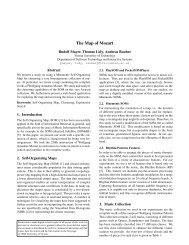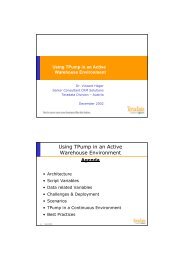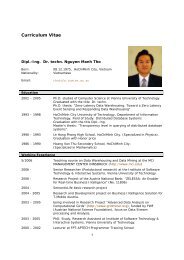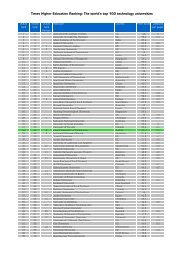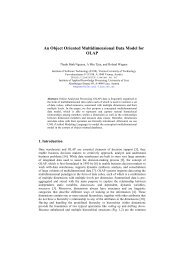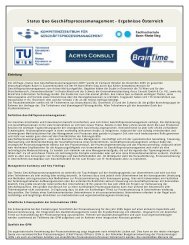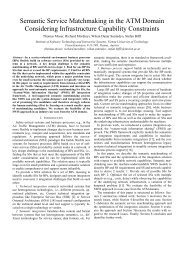Using Ontologies for Enterprise Architecture Model Alignment
Using Ontologies for Enterprise Architecture Model Alignment
Using Ontologies for Enterprise Architecture Model Alignment
Create successful ePaper yourself
Turn your PDF publications into a flip-book with our unique Google optimized e-Paper software.
10 G. Antunes, A. Caetano et al.<br />
4 Conclusions<br />
This paper proposes using ontologies to integrate different enterprise architecture<br />
domains and to analyse the resulting models. This goal is realized through<br />
the specification of a core domain-independent ontology that is extended by a set<br />
of domain-specific ontologies, each focussing on specific concerns. The approach<br />
contributes to the alignment of the different domains while ensuring traceability,<br />
consistency and extensibility. As observed from the case study, <strong>for</strong>mal ontologies<br />
can enhance the quality of meta-modelling due to their automated analysis<br />
capability that can be used to assess meta-model consistency as well as to assess<br />
model con<strong>for</strong>mance. Moreover, ontologies positively contribute to enterprise<br />
architecture alignment because multiple meta-models can be integrated and represented<br />
in such a way that its in<strong>for</strong>mation can be traced and analysed and the<br />
reasoning consequences be exposed. The proposal was evaluated using ArchiMate<br />
as the DIO. To do that, we converted the ArchiMate meta-model to OWL-DL. A<br />
scenario was modelled using the ArchiMate DIO and its domain-specific aspects<br />
were modelled using a set of DSOs. In particular, this paper partially described<br />
one of the DSOs, the Sensor DSO, and exemplified different types of analysis<br />
that can be accomplished using this approach. This demonstration shows that<br />
the application of ontologies to enterprise architecture modelling effectively assists<br />
consistently aligning and analysis different domains.<br />
Our current work focuses on extending the analysis capabilities to support the<br />
validation of models and the assessment of models and meta-models. We are also<br />
working on a set of automated and semi-automated extractor and process mining<br />
tools to instantiate the domain-specific and domain-independent ontologies with<br />
operational data to test the con<strong>for</strong>mance of the “should-be” models towards the<br />
actual “as-is” models.<br />
Acknowledgements<br />
This project is partially supported by the European Commission under the<br />
7th Framework Programme (FP7/2007-2013) under grant agreement 269940,<br />
TIMBUS project (http://timbusproject.net) and by COMET K1, FFG,<br />
Austrian Research Promotion Agency. Gonçalo Antunes is partially supported<br />
by FCT, Fundação para a Ciência e a Tecnologia, through project PEst-<br />
OE/EEI/LA0021/2011 and grant SFRH/BD/69121/2010.<br />
References<br />
1. Lankhorst, M.: <strong>Enterprise</strong> <strong>Architecture</strong> at Work: <strong>Model</strong>ing, Communication, and<br />
Analysis. 3 edn. Springer (2013)<br />
2. Pereira, C.M., Sousa, P.M.A.: <strong>Enterprise</strong> architecture: business and it alignment.<br />
In Haddad, H., Liebrock, L.M., Omicini, A., Wainwright, R.L., eds.: SAC, ACM<br />
(2005) 1344–1345



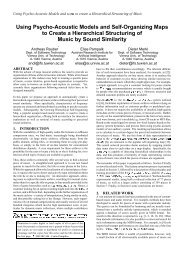


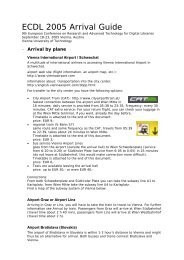
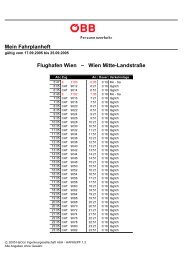
![Informationsvisualisierung [WS0708 | 01 ]](https://img.yumpu.com/22537403/1/190x143/informationsvisualisierung-ws0708-01-.jpg?quality=85)
